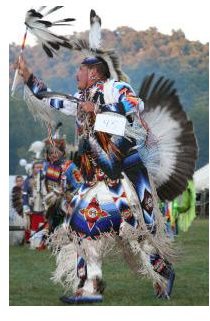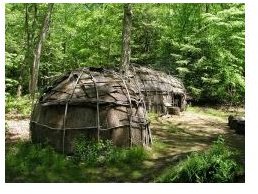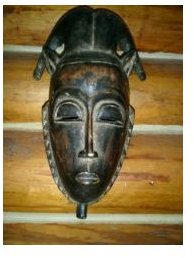Unique Native American Ideas and Activities for Preschool
Bring Excitement with Room Changes
To start this exciting day of new experiences, room changes must take place to give the children a feeling of a fresh environment. Here are some great places to begin.
- Make a Teepee: Gather flexible PVC, long cardboard pieces from an appliance box or other tall materials to tie at the top and create a teepee shape. Next, drape a large sheet, painter’s canvas or any other light, natural colored material over the teepee shape. Tie it around the top and pin back the sides to create an opening. It is also fun to add a wrapped baby, moccasins, pretend fruits and baskets in and around the teepee.
- Add a Talking Stick: Create a talking stick to help manage circle time. Preschoolers will see how Native Americans respected and listened to one another while they spoke.
- Story Time: Add flannel pieces to the flannel board, such as Native Americans, fish, fruits and vegetables, teepees, long houses, and animals. Let the children make up their own story, record it and together hang around the flannel board.
- Weaving Table: Set up a weaving table where preschool children are able to weave with paper or cloth on a plastic frame to create potholders.
- Pottery: Place self hardening red clay on a small table. Place a chart to show steps on how to make a coil pot, pinch pot, slab pot and a tile. When the clay work dries, allow children to paint and take them home, or save the pottery for an art show at the end of the week.
- Fishing: Place craft foam fish and small nets in the water table; alongside the table, hang a picture showing how Native Americans would catch fish to eat.
- Writing: Set up a writing center for preschoolers to make up stories using symbols. Explain that a symbol is a picture to represent a word or event. Children can choose to create their own symbols to represent words. They may draw a picture to represent their story.
Native American Art
Mask Making: Preschool children will have a great time being culturally expressive with this mask activity. Start with large, round white paper plates with precut eye holes, and hot glue a tongue depressor stick to the back of each (adults only with the glue gun). Provide a large amount of art medium to be used for decoration of these masks, such as crepe paper, tempera paint, glue, feathers, oil pastels, string, beads, mosaic squares, ribbon, markers, craft foam and any other materials to be thought of. While the children gather to begin this cultural activity, inform them that masks were used by Native Americans during storytelling, for fun and also for medical reasons, such as healing purposes. Let the children know their mask will have special representation of their choice.
Talking Stick: The talking stick is a useful tool to add to the preschool classroom on a permanent basis. Children will be guided to listen with respect and without interruption to the one who holds the stick, just as Native Americans did. Start with a strong, smooth branch or a thick dowel. One stick can be made for the classroom, as well as individual sticks to be taken home. The stick may be painted, wrapped with ribbons, and beads or feathers may be attached to the ribbons that hang down from the stick.
Pow Wow Drum: Begin with a common coffee can. Wrap and glue any color construction paper around the can. Have patterns for children to trace and cut, or have pre-cut shapes for younger children, such as mask shapes, sun and moon shapes and other various symbols. Glue these shapes to the paper covered coffee can. If desired, add beans or rice to the inside of the can for different sounds when children tap the top of the can lid. Be sure to attach lid securely with hot glue.
Music and Dancing
Dancing Ceremony: This special ceremony will have children bouncing with excitement! Gather drums made from art activity above, and have children beat the drums to a pattern, perhaps a two or four count beat. Ask some children to stand and begin hopping to the beat of the drum. Let them know this is called the “crow hop” and Native Americans dance how they wish to the beat, which is special and unique. Preschoolers may wish to hold hands and form a circle while dancing to the beat of the drums.

Group Activities
The Gift of Nature: Gather preschoolers in a circle; ask them how Native Americans would have lived without grocery stores, pet stores, construction stores or clothing stores. Where would they gather their supplies from?

Be prepared with laminated or contact paper covered posters or pictures of trees, a river and/or ocean and land. These posters will have several hook and loop Velcro pieces so that smaller pictures with hook and loop Velcro are able to be attached. Show and explain one poster at a time as a resource, something we use to give or supply us with something else. Pass the smaller laminated pictures backed with Velcro, such as a totem pole, a long house, a canoe, shellfish, salmon, a pitcher of water, fruit and vegetables and clothes. Have children come up one at a time and show their small picture; ask the class to discuss and answer what resource was used to gather each material or staple.
Have a Potlatch: To prepare for this, cook several items ahead of time (see cooking activity for a recipe to make with children). Include corn bread, dried fruits, strawberry juice, corn on the cob, beans and squash. Tell the children a potlatch is a Native American ceremony where gifts are shared while songs and dances are performed. Many gifts that were shared were food and hand-made things like blankets. During this activity, you all will share food and show the crafts children have made. This can be used as a closing activity at the end of the lesson, if desired.
The leader will begin talking with the talking stick and pass to each child to show their art. When showing is complete, food can be enjoyed and a song, dance and story shared (use other activities during potlatch if desired).
Cooking
Strawberry Juice: Have the children help make strawberry juice just as the Native Americans made. Gather preschoolers around the table and give each a sealed bag with 3 or 4 strawberries inside; have them crush with hands or gently with blocks. When the strawberries are crushed, have the children pour them into a bowl. Have boiling water ready, away from the children, and add two cups to the crushed strawberries; let the bowl sit for thirty minutes in a safe area unable to be reached by the children. Next, when the strawberries are at a safe temperature, let the children observe and note how the juice came out of the strawberries over time. Later, pour the juice into a strainer over a pitcher. What was left over? Save pulp to put on biscuits or crackers. Add honey or maple syrup, as Native Americans did, to add sweetness to the juice. Lastly, pour juice over ice for each child to enjoy.
Inform the children that Native Americans celebrated with strawberries, knowing they were a sign and gift of spring. They considered the juice to be healing, like a medicine.
Stories With Extensions
The Legend of the Indian Paintbrush by Tomie de Paola
After reading this story, crush some fruits from the earth such as blackberries, strawberries, raspberries and other dark juice fruits. Have children use these juices and thin paintbrushes to paint something in nature they love and appreciate.
When Clay Sings by Byrd Baylor
When completing this book, have children work with clay to create pots and etch their own designs to tell a story.
Pocahontas by Edgar Parin d’ Aulaire
This is a book to enjoy comparing and contrasting to another more cartoon version of the story. Spend time in small groups looking at the differences and listen to what the children have observed; make a chart with differences.
More Books!
Salmon Summer by Russ Kendall
Dancing Teepees by Virginia Driving
Houses of Hide and Earth by Bonnie Shemie
Maize Is Corn by Aliki
Wrap It Up
The Native Americans had such a beautiful way of life with peace and simplicity. As I know the majority of Native Americans are now modernized and live life much like the average person, I feel it is important for children to see where and how a certain quality of life came about. I like to observe the Native American ideas and activities for preschool in action, and then note how proud they are of their accomplishments. Native Americans took much pride and respect for the work they completed, and this is a value young children can take with them from these activities.
References
-
Source: author’s own experience and learned knowledge during teaching internship
Native American Life Living Art, http://www.snowwowl.com/naartmasks.html
Southern Pow Wows, http://library.thinkquest.org/3081/styles.htm
The Strawberry Festival, http://islandbreath.org/TheGobbler/Articles%20Published/03%20NA%20Native%20American/02%20Strawberry/na_02_Srawberry.html
Image: Native American Pow Wow by Robb under Morguefile License
Image: Native American Mask by Yessenia 1974 under Morguefile License
Image: Algonkian Village by Cochise under Morguefile License
